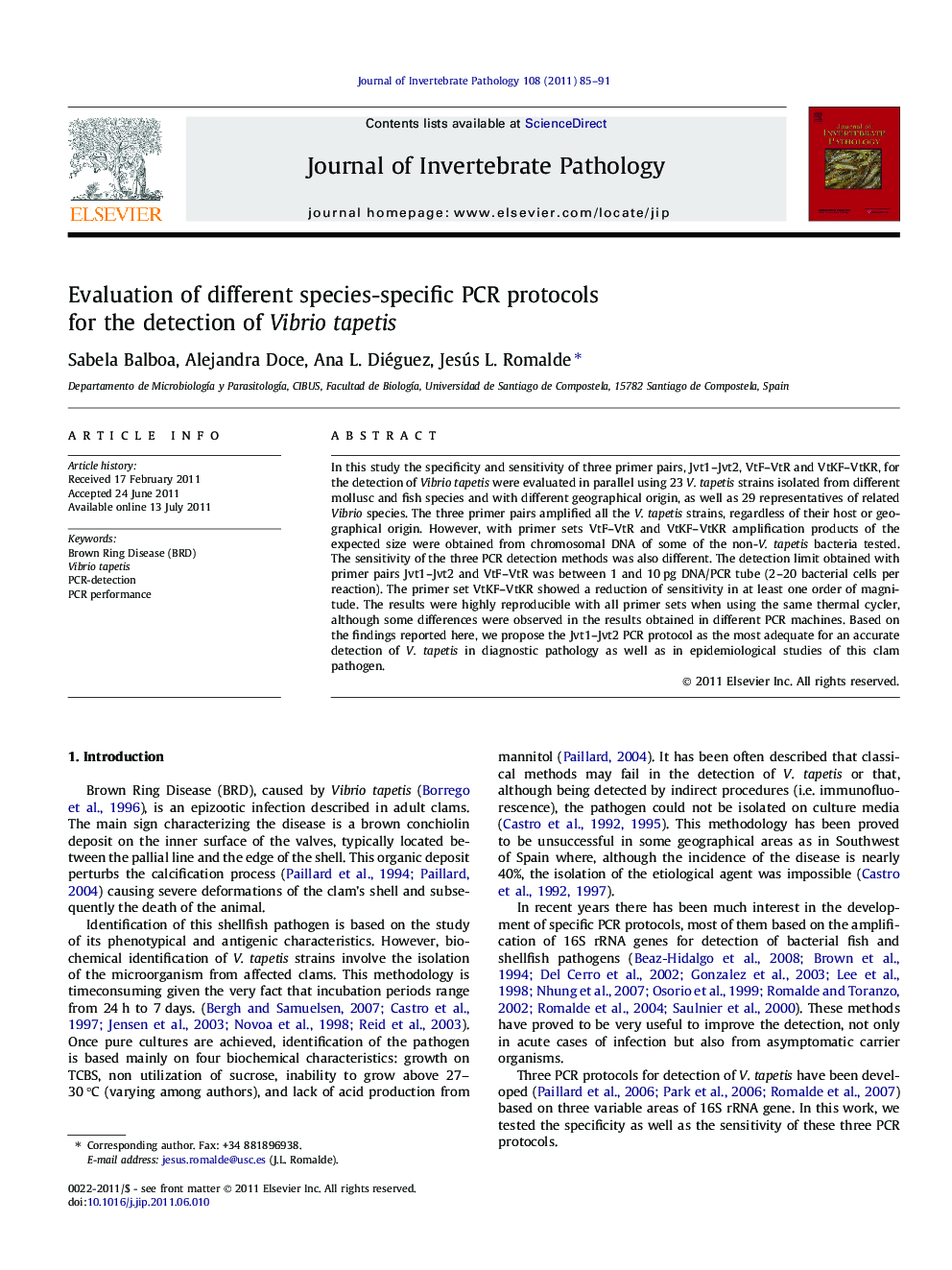| Article ID | Journal | Published Year | Pages | File Type |
|---|---|---|---|---|
| 4557958 | Journal of Invertebrate Pathology | 2011 | 7 Pages |
In this study the specificity and sensitivity of three primer pairs, Jvt1–Jvt2, VtF–VtR and VtKF–VtKR, for the detection of Vibrio tapetis were evaluated in parallel using 23 V. tapetis strains isolated from different mollusc and fish species and with different geographical origin, as well as 29 representatives of related Vibrio species. The three primer pairs amplified all the V. tapetis strains, regardless of their host or geographical origin. However, with primer sets VtF–VtR and VtKF–VtKR amplification products of the expected size were obtained from chromosomal DNA of some of the non-V. tapetis bacteria tested. The sensitivity of the three PCR detection methods was also different. The detection limit obtained with primer pairs Jvt1–Jvt2 and VtF–VtR was between 1 and 10 pg DNA/PCR tube (2–20 bacterial cells per reaction). The primer set VtKF–VtKR showed a reduction of sensitivity in at least one order of magnitude. The results were highly reproducible with all primer sets when using the same thermal cycler, although some differences were observed in the results obtained in different PCR machines. Based on the findings reported here, we propose the Jvt1–Jvt2 PCR protocol as the most adequate for an accurate detection of V. tapetis in diagnostic pathology as well as in epidemiological studies of this clam pathogen.
Graphical abstractAlignment of the 16S rRNA gene sequences of the three strains of Vibrio tapetis, CECT4600T (NR026361) GR0202RD (FR797810) and HH6087 (AY800101), representatives of the different genetic groups described within this bacterial species, and the sequences of the Vibrio species with cross-reactivity in the PCR protocols using primer pairs VtF–VtR and VtKF–VtKR. The correspondences among the sequences explain why these primer-pairs yield positive amplification with non-target Vibrio species.Figure optionsDownload full-size imageDownload as PowerPoint slideHighlights► Vibrio tapetis is a fastidious bacterium difficult to detect and/or isolate. ► We evaluate three PCR protocols developed for detection of this pathogen. ► Primer pair Jvt1–Jvt2 was specific for V. tapetis, with a good limit of detection. ► The low specifity of the other two protocols was explained on the basis of primer design. ► Protocol using Jvt1–Jvt2 primers is the most adequate for diagnosis of BRD in clams.
